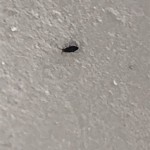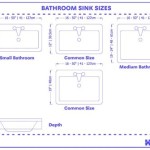How Do You Clean Bathroom Sink Drains?
Bathroom sink drains are susceptible to clogs due to the accumulation of hair, soap scum, and other debris. A clogged drain can be a nuisance, causing water to back up and creating an unhygienic environment. Cleaning bathroom sink drains regularly is essential to maintain proper drainage and prevent unpleasant odors. This article will guide you through the steps of effectively cleaning your bathroom sink drains.
1. Basic Cleaning with Baking Soda and Vinegar
This method is a safe and effective way to clear minor clogs and remove unpleasant odors. Here's how to do it:
- Pour a cup of baking soda down the drain.
- Immediately follow with a cup of white vinegar. The mixture will fizz and bubble as it works to break down the clog.
- Let the mixture sit for 30 minutes.
- Pour a pot of boiling water down the drain. This will help flush out the dissolved debris.
If your drain is still clogged, you can repeat the process or try a more intensive cleaning method.
2. Using a Plunger
A plunger is a versatile tool that can effectively remove clogs from drains. When using a plunger, ensure you use one specifically designed for drains. Here's how to use a plunger:
- Fill the sink with enough water to cover the plunger's cup.
- Place the plunger over the drain hole, ensuring a tight seal.
- Push and pull the plunger up and down vigorously for several minutes.
- Remove the plunger and check if the water drains freely.
If the clog persists, you can repeat the plunging process or try another method.
3. Chemical Drain Cleaners
Chemical drain cleaners are a strong option for breaking down stubborn clogs. However, it's important to use them cautiously as they can be corrosive and harmful if not handled correctly. Always wear protective gloves and eye protection when using chemical drain cleaners.
- Follow the instructions on the product label carefully.
- Pour the cleaner into the drain and let it sit for the recommended time.
- Flush the drain with plenty of water after the cleaner has had time to work.
Chemical drain cleaners should be used as a last resort, as frequent use can damage your pipes. It's advisable to consider alternative methods before resorting to chemical cleaners.
4. Using a Drain Snake
A drain snake is a flexible, coiled tool designed to remove clogs from drains. It is a more powerful option than a plunger and can reach deep into the drainpipe to break up large clogs. Here's how to use a drain snake:
- Insert the end of the drain snake into the drain opening.
- Twist the handle to feed the snake deeper into the drainpipe.
- Feel for the clog and try to break it up by moving the snake back and forth.
- Once the clog is removed, slowly pull the snake back out of the drain.
If you don't have experience using a drain snake, it's best to consult a professional plumber.
5. Preventative Measures
Preventing clogged drains is essential for maintaining a clean and functional bathroom. Here are some preventive measures to follow:
- Install a drain strainer over your bathroom sink drain to catch hair and debris.
- Clean the drain strainer regularly to prevent accumulation.
- Avoid pouring grease or oil down the drain as it can solidify and cause clogs.
- Flush the drain with hot water after each use to help prevent buildup.
By following these steps, you can effectively clean your bathroom sink drains and prevent future clogs. Remember to handle chemical drain cleaners carefully and consult a professional plumber if you encounter persistent clogs or experience any issues.

3 Ways To Clean A Bathroom Sink Drain Wikihow

5 Natural Ways To Unclog A Bathroom Sink Hiller How

Best Ways To Clean Your Bathroom Sink Drain Yourself

How To Unclog A Sink The Right Way

How To Clean A Stinky Sink Drain By Home Repair Tutor

How Often Should I Clean My Drains At Home

Drain Cleaner And Opener Guide

How To Clean A Clogged Sink Remove Stopper

5 Homemade Drain Cleaners That Are Safe For Your Plumbing System Gold Star Heating Cooling

How To Clean Bathroom Drains Unclog Your Shower And Sink
Related Posts







